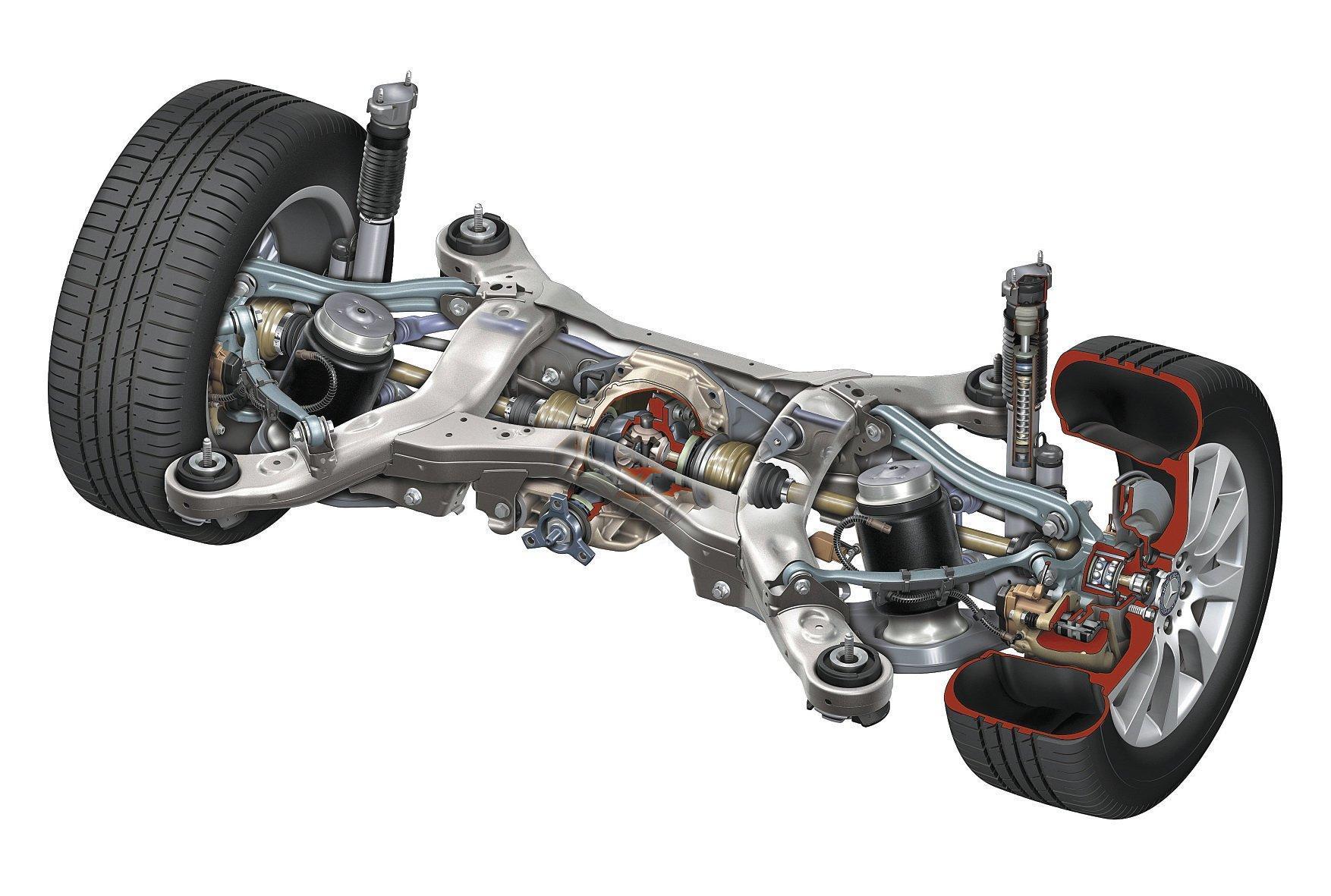
Rear suspension of a car: what is it, how does it work
Content
The torsion bar rigidly ties the rear wheels together, which significantly reduces the comfort and controllability of the car on “bad” tracks. In passenger-and-freight versions, springs are often replaced with springs and shock absorbers. Multi-link designs in front-wheel drive cars are used only in high-end models.
Irregularities in the road surface create shaking, which is felt in the car. Then the trip becomes extremely uncomfortable for passengers. The car's front and rear suspension absorb shocks coming from the road and dampen vibrations. Consider the purpose, principle of operation and structural components for the rear axle of the machine.
What is rear suspension
Suspension as a set of mechanisms is a layer that connects the car body with the wheels.
What is needed for
An important part of the chassis - the rear suspension - levels out road bumps, creates a smooth ride, increasing comfort for the driver and passengers when traveling.
The design implements a number of other functions:
- physically forms the link between the wheel (unsprung mass) and the frame or body (sprung mass);
- resists skidding and rollover of the car in corners;
- additionally participates in braking.
Carrying out the listed tasks, the rear suspension contributes to better cross-country ability of the car.
Suspension device
By the nature of the action, all parts and mechanisms of the rear suspension are divided into three main groups:
- Elastic devices (torsion bars, springs, non-metallic parts) - transfer vertical forces acting from the roadway to the body, and thus reduce dynamic loads.
- Guide elements (levers) - perceive longitudinal and lateral forces.
- Damping nodes - dampen vibrations of the car's power frame.
Rear suspension fasteners are rubber-metal bushings and ball bearings.
front wheel drive car
The rear axle of front-wheel drive cars experiences less stress in motion, so the suspension elements last longer. Modern foreign and domestic cars are more often equipped with inexpensive, easy-to-maintain dependent suspensions with a torsion beam. This solution reduces the costs of the manufacturer and the final cost of the car.

How to maintain your car's suspension
The torsion bar rigidly ties the rear wheels together, which significantly reduces the comfort and controllability of the car on “bad” tracks. In passenger-and-freight versions, springs are often replaced with springs and shock absorbers. Multi-link designs in front-wheel drive cars are used only in high-end models.
rear wheel drive car
The drive to the rear axle of passenger cars imposes additional reliability requirements on the suspension, therefore, in the design of such cars, a multi-link is more often used. In this case, the hubs of the slopes are fixed with longitudinal and transverse levers in the amount of at least four pieces.
Rear wheel drive suspensions provide unparalleled ride comfort and low noise levels.
Rear suspension elements
The safety of movement depends on the health of the rear suspension, so it is important to know the components of the assembly.
The system includes:
- Longitudinal pendulum levers. Do not allow wheels to oscillate in a horizontal plane.
- Cross levers (two for each slope). They preserve the wheel alignment and keep the latter in a strictly perpendicular position relative to the road;
- Anti-roll bar. Reduces lateral rolls during maneuvers.
- Stabilizer's pole. They work on the lateral stability of the car.
- Shock absorber.
For the rear suspension, the stiffness of the shock absorbers and stabilizers, the length of the levers are important. As well as the degree of damping of shock-absorbing mechanisms.
Types
The various variations of rear suspensions can, however, be divided into three main types:
- dependent structure. A pair of rear wheels is rigidly connected by an axle, a beam, or a split or continuous bridge. Often there are combinations of suspensions that provide for the installation of a bridge with a spring (dependent, spring), spring (dependent, spring) and pneumatic elements (pneumatic, dependent). When the wheels are connected by a rigid beam, the load is directly transferred from one side to the other: then the ride does not differ in softness.
- Semi-independent suspension. The same beam is used here, but with the characteristics of a torsion bar. Or the latter is built into the beam. This design feature adds a smooth ride, as the torsion bar softens the stress transmitted from one slope to another.
- independent type. Wheels connected by an axle cope with the loads on their own. Independent suspensions are pneumatic and torsion bar.
The third version of the mechanisms is the most progressive, but complex and expensive.
Principle of operation
The car suspension works like this:
- When the car hits an obstacle, the wheel rises above the horizontal track, changing the position of the rods, levers, swivel units.
- This is where the shock absorber comes into play. At the same time, the spring, which was previously in a free state, is compressed under the influence of the kinetic energy of the push of the tire in the direction from the ground plane - upwards.
- The elastic compression of the shock absorber with a spring displaces the rod: rubber-metal bushings partially absorb shock and vibration transmitted to the car body.
- After that, a natural reverse process occurs. A freshly compressed spring always seeks to straighten up and return the shock absorber, and with it the wheel, to its original position.
The cycle is repeated with all wheels.